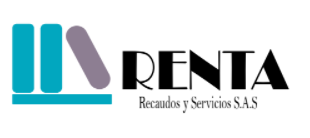The database can automatically redistribute the data when the time comes. Data can be distributed across different regions with ease via the MongoDB Atlas cloud service. You can also choose to constantly store them in specific regions or global regions to ensure reduced latency. Since there are no tables in MongoDB, there are no foreign keys in MongoDB either; hence no foreign key constraints. However, MongoDB does have a DBRef standard which helps standardize the creation of the references.

MySQL supports B-Tree Indexing and Partitioning to improve query performance on larger tables. However, the lack of support for Bitmap, Partial, and Functional Indexes in MySQL leaves DBAs with limited tuning options. Partitioning of larger tables can improve performance, but partition tables in MySQL cannot be placed in general tablespaces, which is a serious showstopper for I/O balancing. The advantage of MySQL replication is that the replicas are not read-only. This means that if an application fails over to a replicas when a primary database crashes, replicas can consume both reads and writes to ensure that applications are working seamlessly.
Does MongoDB support ACID transactions?
It hinges on understanding your project’s unique characteristics and aligning them with the strengths and weaknesses of each database. MongoDB’s ease of use and quick development may provide advantages for small projects or startups with evolving data structures and flexible requirements. Among the myriad database management systems available, MongoDB and PostgreSQL stand out as two of the most popular choices, each with its unique strengths. MongoDB is a document database and uses BSON for processing its data whereas PostgreSQL is a relational database that uses traditional SQL for its processing.

It offers multiple options for managing and interacting with databases, including the popular MySQL Workbench and command-line tools like MySQL Shell. These tools provide a graphical environment for database administration, query execution, and performance tuning, catering to both novice and experienced users. MySQL’s familiar SQL language, widely adopted across the industry, ensures ease of use and compatibility with existing skills and knowledge. Its flexible document model, based on BSON (Binary JSON), aligns well with modern programming paradigms and eliminates the need for complex object-relational mapping (ORM) layers.
Which Database Should You Choose: MongoDB or PostgreSQL?
EDB Postgres Advanced Server is an enhanced Postgres database with Oracle compatibility and enterprise security features. To achieve horizontal table-level scalability in Postgres (horizontal table partitioning), commercially developed products based on Postgres, such as CitusDB, Greenplum, and IBM Netezza, are the way to go. Open-source Postgres itself does not support horizontal table partitioning; PostgresXC is an option but is not popular due to its performance and maintenance overhead.

Relational databases often store information about tables, databases, columns, etc. in system catalogs. These “data dictionaries” appear to the user as tables, but they do have information stored internally by the database system. In the next section, we’ll elucidate the differences between MongoDB and PostgreSQL to help you make that decision easily. Our information is based on key factors like architecture, ACID compliance, extensibility, replication, security, and support to name a few. The real question isn’t MongoDB vs PostgreSQL, but rather the best document database vs the best relational database.
MongoDB vs PostgreSQL: Maintaining Data
And if you want to manage the database development
lifecycle for both of them, please check out Bytebase. As the Stack Overflow survey shows, though Postgres is the most popular database among all respondents, MongoDB
is more welcomed by the new learners. At Bytebase, we work with both databases extensively since the Bytebase product needs to integrate
with both. Our founders also build Google Cloud SQL, one of the largest hosted database services.
The database is at the core of the MongoDB ecosystem, though there are numerous layers bringing users extra value and problem-solving capabilities. With a document database, developers or teams have the power to own documents (or parts of them) and change them as required. There’s no need for intermediation or complicated communication between teams.
Difference Between MongoDB vs PostgreSQL
MQL is built to interact specifically with MongoDB databases and match similar features and flexibility as in SQL databases. With MQL, you can query any field, embedded documents, or nested arrays in the MongoDB database. A fixed schema does not limit you, and you can easily add or remove fields from your documents as your data changes. On the other hand, PostgreSQL’s rigid schema provides more control over data integrity and consistency.
MongoDB vs. PostgreSQL vs. ScyllaDB: Tractian’s Experience – The New Stack
MongoDB vs. PostgreSQL vs. ScyllaDB: Tractian’s Experience.
Posted: Wed, 31 May 2023 07:00:00 GMT [source]
In addition to this detailed comparison, the article addresses frequently asked questions (FAQs), providing further insights and clarity on database selection. MongoDB’s horizontal scalability and high availability mean it’s ideal for handling transactional data in financial systems. Availability ensures that even during a server outage, there’s no data downtime. MongoDB uses primary node replication, which duplicates data into replica sets.
MongoDB vs. PostgreSQL
MongoDB’s ability to work seamlessly with various data formats, including SQL and NoSQL, is a significant advantage for your business. This interoperability ensures that your data can be efficiently integrated and used across different platforms and systems, promoting flexibility and enhancing data-driven decision-making processes. The transcript is the copying of data from one database to another to confirm high availability and redundancy.
- These “data dictionaries” appear to the user as tables, but they do have information stored internally by the database system.
- PostgreSQL also enables you to implement the client certificate authentication (CCA) tools as an option, and use cryptogenic functions to store encrypted data in PostgreSQL.
- This database enables all document fields to be indexed and queried simply, as well as those that are deep within sub documents and arrays.
- It stands out for its adherence to SQL standards and emphasis on data integrity.
- However, its limitations in terms of SQL and database features compared with other databases could pose challenges in building efficient RDBMS applications.
Write-ahead logs enable sharing the changes made with the replica nodes, hence making asynchronous replication possible. Other kinds of replications include logical replication, streaming replication, and physical replication. You can also implement list partitioning where the table is partitioned according to the key values specified. Since version 5.0, MongoDB has included a “live” resharding feature that comes as a major time-saver since you only need to set a policy.
Scalability and performance
An event driven architecture would be much suited, where we could send an event as soon as any visitor walks into the building and is checked in by the receptionist. The right answer for your needs is based of course on what you are trying to do. Our goal in this article is to help to explain the personality and characteristics of mongodb vs postgresql each of these databases so you can better understand whether it meets your needs. PostgreSQL triggers are advanced; the supported triggering events are AFTER, BEFORE, and INSTEAD OF triggers for INSERT, UPDATE, and DELETE events. If you need to execute a complex SQL when the trigger gets invoked, you can do this using functions.

